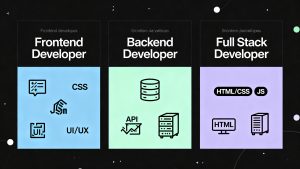The digital landscape is evolving at a breakneck pace, largely propelled by the rapid advancement of Large Language Models (LLMs). These powerful AI systems are not just theoretical marvels—they are actively reshaping software development, information retrieval, and the very way engineers approach problem-solving. From the emergence of “Software 3.0,” where natural language becomes a programming tool, to real-world business impacts like enhanced search capabilities at major tech companies, the influence of LLMs is both profound and accelerating.
The Shift to Software 3.0: Programming in English
Andrej Karpathy, a prominent voice in AI, describes a fundamental shift in software engineering with the rise of “Software 3.0.” In this new era, LLMs are programmed using English prompts, transforming them into a new breed of digital computers. Karpathy likens LLMs to early operating systems—centralized, powerful, and rapidly evolving.
For engineers, this means mastering three paradigms:
- Software 1.0: Traditional code and logic.
- Software 2.0: Neural networks and learned weights.
- Software 3.0: Prompt engineering and natural language instructions.
This transition is unique in that it empowers end-users and developers alike, making advanced programming accessible to a broader audience. LLMs are now utilities that anyone can “program” with the right prompts, democratizing access to complex computational power.
LLMs as “People Spirits”: Augmenting Human Capabilities
Karpathy further characterizes LLMs as “people spirits”—AI entities that simulate human-like reasoning, vast knowledge, and, inevitably, certain cognitive quirks such as hallucinations. This analogy highlights both the potential and the limitations of current LLMs.
To harness their strengths while mitigating risks, engineers are building “partially autonomous” applications:
- Human-in-the-loop verification: Ensures accuracy and reliability.
- Intuitive GUIs: Allow rapid auditing and correction.
- Autonomy sliders: Enable dynamic control over the AI’s independence.
Rather than striving for full autonomy, the current best practice is to use LLMs as “Iron Man suits”—tools that amplify human intelligence and productivity. This approach also calls for “agent-ready” infrastructure, including LLM-friendly documentation and machine-executable interfaces, to facilitate seamless AI integration.
Advanced RAG Techniques: Building Reliable AI Systems
Retrieval Augmented Generation (RAG) is a transformative approach that grounds LLM outputs in external data, making them more factual and context-aware. While basic RAG combines search with LLM prompting, advanced techniques push the boundaries of what’s possible:
- Optimized Data Chunking and Vectorization: Improves how information is split and indexed for retrieval.
- Hierarchical Indices & Hypothetical Document Embeddings (HyDE): Enhance search accuracy and context relevance.
- Context Enrichment: Retrieves precise data chunks but augments them with surrounding context for better reasoning. Techniques like Sentence Window and Auto-merging Retrievers are instrumental here.
- Fusion Retrieval: Combines keyword and vector-based search to boost retrieval accuracy.
- Reranking and Filtering: Further refines the context presented to the LLM.
A key actionable insight is that prompt engineering remains the most cost-effective way to enhance RAG pipelines. Simple tweaks to how prompts are structured can lead to significant performance improvements.
Sophisticated RAG: Query Transformation and Agentic Architectures
As RAG matures, more complex strategies are emerging:
- LLM-driven Query Transformation: Techniques like query decomposition, step-back reasoning, and rewriting help tackle complex information needs.
- Robust Chat Engines: Maintain conversational context and enable multi-turn interactions.
- Intelligent Query Routing: Directs queries to the most appropriate data sources or models.
- Agentic RAG Architectures: Allow for multi-document analysis and complex reasoning, though they introduce latency and scalability challenges.
Response synthesis methods and model fine-tuning—both for encoders and LLMs—are proving effective. For example, encoder fine-tuning can yield a 2% uplift in retrieval, while LLM distillation and advanced techniques like RA-DIT can improve faithfulness and knowledge-intensive task performance by around 5%.
Evaluating these systems requires robust frameworks such as Ragas or TruLens, focusing on the “RAG triad”: context relevance, groundedness, and answer quality. Speed remains a production bottleneck, underscoring the growing importance of efficient, smaller LLMs for real-time applications.
Understanding Transformers: The Engine Behind LLMs
At the heart of modern LLMs lies the Transformer architecture, introduced in the landmark “Attention Is All You Need” paper. Transformers excel at predicting the next token in a sequence by leveraging powerful attention mechanisms:
- Tokenization and Embedding: Input text is broken into tokens and embedded into high-dimensional vectors.
- Attention Blocks: Allow tokens to interact, sharing contextual information.
- Multi-Layer Perceptrons (MLPs): Encode world knowledge and refine representations.
- Query, Key, Value System: Each token generates a query (what it seeks), a key (what it offers), and a value (its content). Attention weights, calculated via dot products and softmax, determine how much information is shared between tokens.
- Multi-Headed Attention: Runs multiple attention processes in parallel, capturing diverse relationships.
- Causal Masking: Ensures tokens only attend to previous context during training, enabling efficient parallelization.
This architecture, highly optimized for GPUs, allows Transformers to process vast amounts of data efficiently, making them the backbone of today’s LLMs.
Production Challenges and Opportunities
While the capabilities of GenAI and RAG are impressive, engineers face real-world challenges:
- Latency and Speed: As demand for real-time applications grows, optimizing for speed with smaller, efficient models is crucial.
- Evaluation and Monitoring: Continuous assessment using advanced frameworks ensures reliability and relevance.
- Infrastructure Readiness: Preparing documentation, APIs, and workflows for LLM integration is now a strategic priority.
Conclusion
The convergence of GenAI and advanced RAG techniques is fundamentally reshaping engineering and software development. By understanding the mechanics of LLMs, leveraging sophisticated retrieval strategies, and building robust, agent-ready systems, engineers are poised to lead in this new era. Staying ahead means not just keeping pace with technological change, but actively shaping how AI is woven into the fabric of tomorrow’s digital world.
Read more such articles from our Newsletter here.



